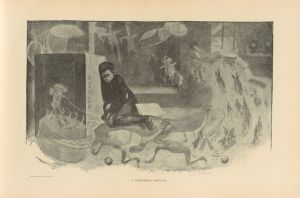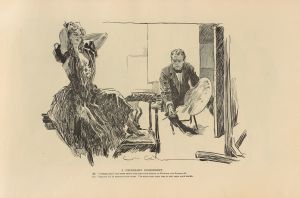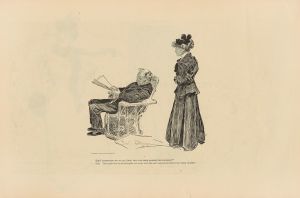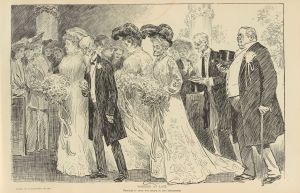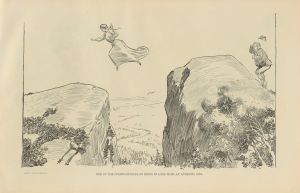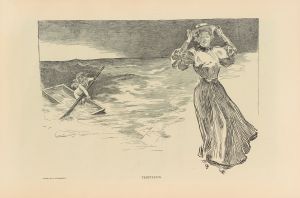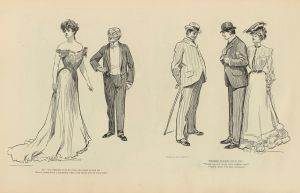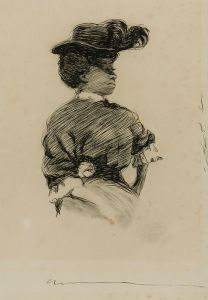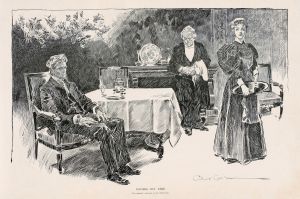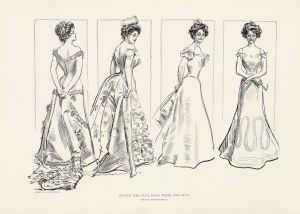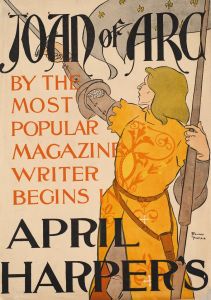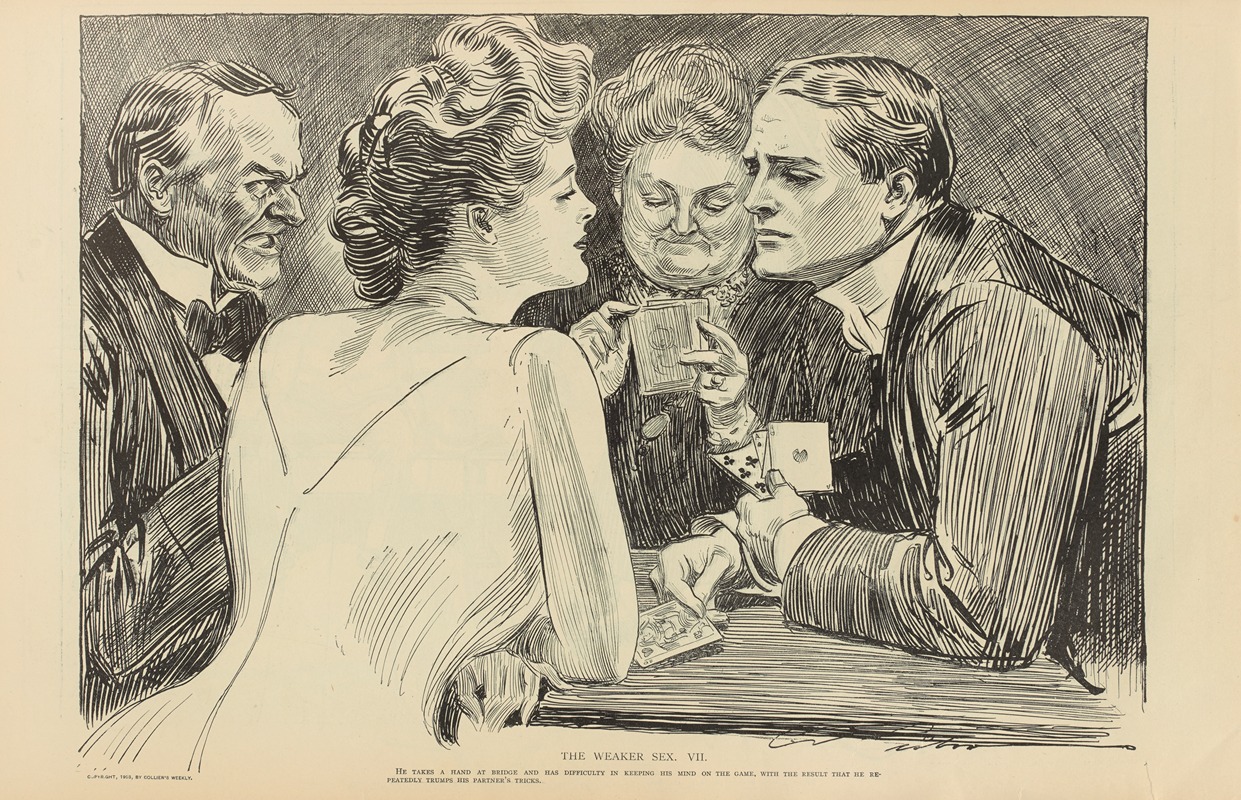
The weaker sex.—VII
A hand-painted replica of Charles Dana Gibson’s masterpiece The weaker sex.—VII, meticulously crafted by professional artists to capture the true essence of the original. Each piece is created with museum-quality canvas and rare mineral pigments, carefully painted by experienced artists with delicate brushstrokes and rich, layered colors to perfectly recreate the texture of the original artwork. Unlike machine-printed reproductions, this hand-painted version brings the painting to life, infused with the artist’s emotions and skill in every stroke. Whether for personal collection or home decoration, it instantly elevates the artistic atmosphere of any space.
"The Weaker Sex.—VII" is a notable illustration by the American artist Charles Dana Gibson, created in the early 20th century. Charles Dana Gibson (1867-1944) was a prominent illustrator and is best known for his creation of the "Gibson Girl," an iconic representation of the American woman that became a cultural phenomenon during the late 19th and early 20th centuries.
"The Weaker Sex.—VII" is part of a series of illustrations that humorously depict the social dynamics and gender roles of the time. The series often explores the concept of the "weaker sex," a term historically used to refer to women, and turns it on its head by showcasing women in positions of strength, influence, and control, often at the expense of men. This particular illustration is a prime example of Gibson's satirical approach to gender relations.
In "The Weaker Sex.—VII," Gibson employs his characteristic pen-and-ink technique to create a detailed and expressive scene. The illustration typically features a group of women, often depicted as confident and composed, juxtaposed with men who appear to be overwhelmed or outmatched. This contrast serves to challenge the contemporary stereotypes of women as passive or subordinate.
Gibson's work, including "The Weaker Sex.—VII," was published in popular magazines of the time, such as Life and Collier's Weekly. These publications reached a wide audience and played a significant role in shaping public perceptions of gender roles. The "Gibson Girl" became a symbol of the modern, independent woman, and Gibson's illustrations were influential in promoting the idea that women could be both beautiful and strong.
The popularity of Gibson's illustrations, including "The Weaker Sex.—VII," can be attributed to their wit, artistic skill, and social commentary. They resonated with a society that was beginning to see shifts in gender dynamics, as women were increasingly seeking education, employment, and suffrage. Gibson's work captured the spirit of this transitional period and contributed to the ongoing dialogue about women's roles in society.
Charles Dana Gibson's legacy as an illustrator is significant, and his work continues to be studied and appreciated for its artistic merit and cultural impact. "The Weaker Sex.—VII" remains an important piece within his oeuvre, exemplifying his talent for combining humor with incisive social critique. Through his illustrations, Gibson not only entertained but also provoked thought and discussion about the evolving roles of men and women in early 20th-century America.







